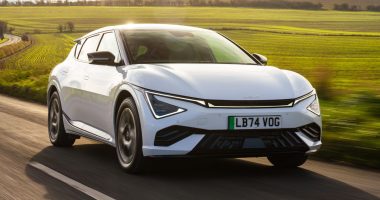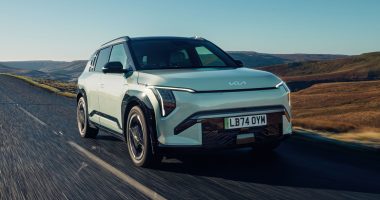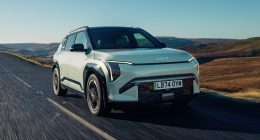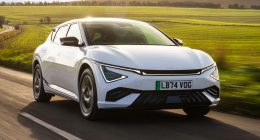This aggressive looking little number is the new Picanto. At a time when more manufacturers are mothballing small car production, Kia has instead decided to keep the nameplate alive for a few more years, at least.
In one hand it makes a lot of sense for the manufacturer to stay in the city car lane as the A-segment consists of about 50% fewer small car rivals than it did 10 years ago. On the other, the total profit that can be made from each unit of these box-shaped runarounds sold is, much like the cars themselves, considerably small.
As styling intent goes, the new Picanto makes quite the impression. Taking much of its inspiration from Kia’s flagship vehicle – the seven seat, all-electric EV9 SUV – the reworked front gains vertically stacked headlights. On sportier ‘GT-Line’, ‘3’ and ‘GT-Line S’ versions, these incorporate LEDs and are connected by an LED light bar; on lower-specification cars, this is replaced by the tried and tested chrome strip. At the rear, the lights are similar in profile to before except, this time they too are joined by a thin LED bar.
Opt for a ‘GT-Line’ (£16,745) which sits above entry-level ‘2’ and, among other things, it introduces 16-inch alloy wheels with up-grades to the exterior styling that comprise special badging, a gloss black front grille, gloss black mirror caps, side skirts with black accents, and a subtle faux rear bumper diffuser. Also specific to it and ‘GT-Line S’ are ‘Azure Blue’, ‘Astro Grey’ and ‘Adventurous Green’ body colours. All things considered, the Picanto now has more of a tough – butch, even – presence about it, though descaling the EV9 design language into a car that is roughly a third of the size will polarise opinion.
As for the interior, Kia has been hard at work here, too. The lower console is carried over unchanged but the 8-inch touchscreen and 4.2-inch digital driver display are both new and standard across the entire range. Quality is decent if not spectacular, while the alloy pedals, silver trim garnishes and seats upholstered in a black clock and artificial grey pleather help to lift the overall ambience on the inside. Space is generally fair to middling and four average-sized adults will not have any gripes about getting comfortable, although the 255-litre boot does mean weekend getaways are going to require sacrifices when it comes to choosing what to take along – and what must stay behind.
All but the range-topping ‘GT-Line S’ Picanto draw their power from a 1.0-litre, three-cylinder petrol. If you go all-in, you secure the 1.2-litre, four-cylinder petrol. In a direct attempt to keep up with strict emission laws, these have both been detuned slightly from 66bhp and 83bhp to 62bhp and 77bhp respectively – not exactly helpful even if improved miles per gallon is the intended upshot.
Our test car came with the smaller of the two units and, unsurprisingly, it takes time to build up a head of steam, particularly if you have people riding shotgun. Forward planning is advisable when eyeing up an overtake but, even then, only if it involves slower moving vehicles. The 5-speed manual is well oiled and allows you to keep the revs up thanks to smooth back and forth selections. Those wishing for a more relaxing driving experience should consider the optional automatic transmission.
Little, if anything, has been changed to the way the pint-sized Picanto points and steers – and that suits us just fine. It has always been a proper hoot to drive from A to B via C thanks to a hugely chuckable feel – the by-product of its low kerb weight. A wheelbase that is a few centimetres longer than the previous generation Picanto noticeably improves the ride, yet sharper bumps and ridges tend to unsettle the chassis. This is less of an issue around town, though, as the suspension laps these up. The brakes are easy to meter, and the middle pedal has a firm, confidence-inspiring heft to it as well.
Across the four-car line-up, Anti-lock braking system (ABS) and Electronic Brakeforce Distribution (EBD), Electronic Stability Control (ESC) and Forward Collision Avoidance (FCA), Hill-start Assist Control (HAC), Lane Keep Assist, and Lane Follow Assist all feature. Forward Collision-Avoidance Assist – which detects pedestrians and cyclists – and Blindspot Collison Avoidance Assist are reserved for ‘GT-Line S’ trim.









